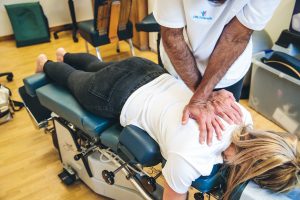 With the New Year just around the corner, our commitment to providing EPIC care to our patients, old and new, remains as strong as ever. The exciting news is that the World Health Organisation (WHO) have officially endorsed our approach to managing lower back pain.
With the New Year just around the corner, our commitment to providing EPIC care to our patients, old and new, remains as strong as ever. The exciting news is that the World Health Organisation (WHO) have officially endorsed our approach to managing lower back pain.
What makes our approach to patient care so EPIC? Well, it’s:
- Evidence based
- Patient-centred
- Interprofessional
- Collaborative
Now, the latest guidelines from the World Health Organisation (WHO)* have officially endorsed this combination of approaches as the optimal way to manage chronic low back pain without resorting to surgery.
As we embrace this news, let’s take a closer look at what the EPIC approach means for you:
Evidence-Based: At Cliffs, our methods for caring for your back are rooted in evidence from clinical studies that support the results we achieve. We believe in keeping you informed about relevant findings from these studies, ensuring you understand the rationale behind our care plan.
People-Centred: Your involvement in your healing process is crucial to us. We prioritise making you an active participant in decision-making by providing comprehensive information about your condition. By listening to your needs, concerns, and life circumstances, our goal is to get you on the path to recovery swiftly. This often involves recommending rehabilitative exercises and offering advice on self-care to prevent issues from recurring.
Interprofessional and Collaborative: At Cliffs, we operate as a team of professionals from diverse backgrounds. If our chiropractors determine that additional care from our other therapists would benefit you, or vice versa, we seamlessly coordinate your treatment plan. Should your condition warrant a visit to see a consultant or have other tests done, we will recommend these accordingly. When additional opinions are required, we also have a team of peers we discuss cases with.
If you know anyone who could benefit from EPIC care for their lower back pain (or other musculoskeletal problems), please share this post with them.
* The full WHO guidelines are here: https://www.who.int/publications/i/item/9789240081789
